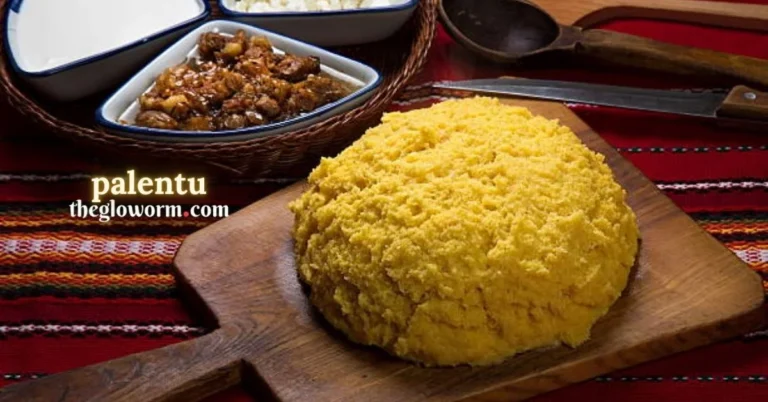Introduction to Palentu and Cornmeal Cuisine
Imagine a dish that has traveled the world, adapting and evolving through different cultures. This is palentu, a beloved cornmeal dish that showcases the versatility of one staple ingredient—corn. From comforting polenta in Italy to savory arepas in Colombia and soul-warming cornbread in the Southern United States, palentu reflects rich culinary traditions and shared histories. It’s more than just food; it’s a bridge between generations and communities.
In this blog post, we will dive into the origins of cornmeal cuisine, explore traditional dishes from various regions, discuss health benefits, uncover creative cooking methods, and highlight how palentu unites people across continents. Get ready for a flavorful journey that celebrates not only what’s on your plate but also the stories behind it!
The Origins of Cornmeal Cuisine
Cornmeal cuisine traces its roots back thousands of years. Indigenous peoples in the Americas were among the first to cultivate corn, using it as a staple food source. The versatility of corn allowed for various cooking methods and recipes.
As settlers traveled, they carried their love for cornmeal across oceans. European cultures embraced this ingredient, adapting it into dishes that reflected local tastes. From polenta in Italy to cornbread in the Southern United States, each region made it their own.
These adaptations showcase how ingredients can transcend borders and evolve over time. Today, cornmeal is enjoyed worldwide, symbolizing cultural exchange and history through every bite.
Traditional Dishes from Different Regions and Cultures
Cornmeal serves as a versatile foundation for myriad traditional dishes worldwide. In Italy, polenta steals the spotlight. This creamy delight pairs beautifully with rich sauces and hearty stews, embodying rustic charm.
Travel to West Africa, and you’ll encounter fufu. Often enjoyed with soups or meats, its smooth texture makes it a comforting staple in countless households.
In South America, arepas reign supreme. These cornmeal cakes can be stuffed or topped with ingredients ranging from cheese to avocado. Each bite offers a burst of flavor that reflects local customs.
Over in the Southern United States, cornbread has earned its place at the table. Its slightly sweet taste complements savory meals perfectly and is often served during gatherings.
Across cultures, these dishes highlight how cornmeal unites people through shared culinary heritage while embracing regional flavors and traditions.
The Health Benefits of Cornmeal
Cornmeal is a powerhouse of nutrition that often gets overlooked. Rich in fiber, it promotes digestive health and helps keep you feeling full longer.
Packed with essential vitamins and minerals, cornmeal contains B vitamins that support energy metabolism. It’s also a good source of iron, which is crucial for transporting oxygen throughout the body.
This gluten-free alternative makes it an excellent choice for those with dietary restrictions. You can enjoy its versatility in both sweet and savory dishes without worrying about gluten-related issues.
Additionally, cornmeal has antioxidants that help combat oxidative stress. These properties may reduce the risk of chronic diseases over time.
Incorporating cornmeal into your diet offers numerous health benefits while adding unique flavors to meals. Whether used in polenta or cornbread, it’s a delicious way to nourish your body.
Creative Ways to Cook with Cornmeal
Cornmeal isn’t just for polenta or cornbread. This versatile ingredient can elevate a variety of dishes. Try using it as a coating for fried chicken or fish, adding a delightful crunch and flavor that regular flour can’t match.
You might experiment with cornmeal in your morning routine too. Mix it into pancake batter for an unexpected texture and taste twist. The subtle sweetness pairs perfectly with maple syrup.
For something different, consider making savory muffins by blending cheese and herbs into cooked cornmeal. These are perfect alongside soups or salads.
Don’t overlook dessert either! Cornmeal can be used to create a unique cake that intrigues the palate with its grainy goodness.
How about crafting homemade tortilla chips? Simply cut tortillas into triangles, dust them with cornmeal before frying, and enjoy the extra crunchiness in every bite.
Exploring the Global Influence of Palentu
Palentu, a cherished cornmeal dish, has transcended borders and cultures. Its versatility allows it to adapt to local flavors and cooking methods.
In Italy, polenta graces tables as a comforting staple. Meanwhile, in Brazil, the vibrant dish known as “fubá” is found in both savory and sweet variations.
Traveling north to the United States, cornbread emerges from Southern kitchens steeped in tradition. Each region adds its own twist, showcasing unique ingredients that reflect local tastes.
The global journey of palentu highlights food’s power to connect people. It serves not just as nourishment but also as a source of pride and identity for many communities around the world.
From street vendors serving warm bowls to family gatherings where recipes are passed down through generations—palentu fosters shared experiences that celebrate culinary heritage across continents.
Conclusion: How Palentu Brings People Together Through Food
Palentu serves as a remarkable bridge, connecting diverse cultures through the simple yet profound ingredient of cornmeal. It has traveled across continents and adapted to local tastes, showcasing how food can embody shared experiences and histories.
When families gather around a steaming pot of polenta in Italy or enjoy the comforting taste of arepas in Colombia, they partake in more than just a meal. They engage with tradition, community, and love. Each region’s unique interpretation adds layers to palentu’s story while fostering a sense of belonging among those who share it.
The beauty of palentu lies not only in its versatility but also in its ability to bring people together. Whether it’s at festive gatherings or casual dinners, this humble dish continues to nourish relationships across generations. As we explore these culinary traditions rooted in cornmeal cuisine, we find that palentu is much more than food—it’s an experience that unites us all through warmth and flavor.

